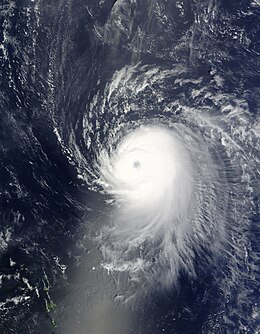User:Hurricanefan25/Sandbox 8
| Category 4 major hurricane (SSHWS/NWS) | |
 Ike at peak intensity off the Lesser Antilles on September 4 | |
| Formed | September 1, 2008 |
|---|---|
| Dissipated | September 15, 2008 (Extratropical after September 14, 2008) |
| Highest winds | 1-minute sustained: 145 mph (230 km/h) |
| Lowest pressure | 935 mbar (hPa); 27.61 inHg |
| Part of the 2008 Atlantic hurricane season | |
Hurricane Ike
Meteorological history[edit]

Map key
Tropical depression (≤38 mph, ≤62 km/h)
Tropical storm (39–73 mph, 63–118 km/h)
Category 1 (74–95 mph, 119–153 km/h)
Category 2 (96–110 mph, 154–177 km/h)
Category 3 (111–129 mph, 178–208 km/h)
Category 4 (130–156 mph, 209–251 km/h)
Category 5 (≥157 mph, ≥252 km/h)
Unknown
Tropical storm (39–73 mph, 63–118 km/h)
Category 1 (74–95 mph, 119–153 km/h)
Category 2 (96–110 mph, 154–177 km/h)
Category 3 (111–129 mph, 178–208 km/h)
Category 4 (130–156 mph, 209–251 km/h)
Category 5 (≥157 mph, ≥252 km/h)
Unknown
Storm type
Hurricane Ike was first identified as a distinct tropical wave—or an elongated area of low atmospheric pressure oriented north to south—which departed the west African coast on August 28. The following day, a low-pressure area formed the following day parallel to the wave axis and generated irregular thunderstorm patterns while it drifted south of the Cape Verde Islands during August 29 and 30.[1]
Preparations[edit]
Impact[edit]
Aftermath[edit]
References[edit]
- ^ Berg, Robbie (2010-05-03). Tropical Cyclone Report — Hurricane Ike (AL092008) (PDF) (Report). United States: National Hurricane Center. pp. 1–55.

